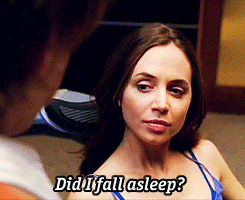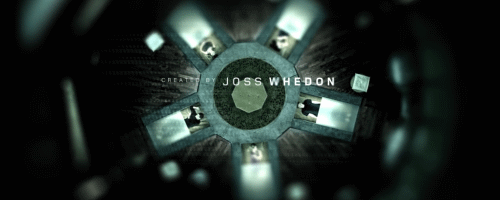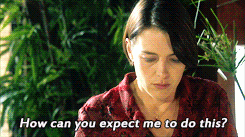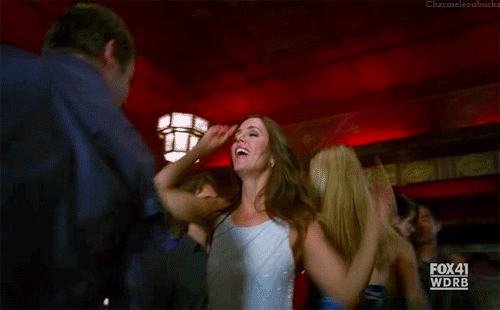If psychology and conspiracies are your thing, then look no further for your next thrill.
For those of you who don’t mind shaking the foundations of your own identity, this article will provide you with a spoiler-free explanation about the show, and why you should look into it.
Hogwarts Dollhouse, A History
After all of the flack they received for canceling the Joss-Whedon Wonder-Show Firefly in 2002, the executives at 20th Century Fox took another chance in 2009. They teamed up with Whedon to produce a new show.
While the series received generally mediocre ratings during its first season, FOX’s president of entertainment renewed it for a second season to prevent an uproar of angry fan-mail from the viewers (a lesson he had learned the hard way with Firefly). After all, Whedon had five years’ worth of plans for the intricate, thrilling plot of Dollhouse...
But in the end, Whedon’s show sent to the chopping block yet again.
But in the end, Whedon’s show sent to the chopping block yet again.
Dollhouse stopped with only two seasons under its belt, and Whedon may have unofficially decided never to make a deal with FOX again…
The Plot
Set roughly in the modern world, this show examines the inner workings of a multi-million-dollar business known only to a select few as “the Dollhouse.” If you’re rich enough, you can pay to have any human service you want: the perfect date, the perfect counselor, the perfect assassin, the perfect best friend...
You see, the Dollhouse is in possession of multiple human beings whose memories have been removed, leaving innocent and amiable “dolls,” that can be implanted with any new personality, depending on what a customer orders. The implanting process can imbue an empty human being with habits, mannerisms, and — most importantly — memories of an entire lifetime.
Each doll will perform their duties without a hitch because they believe that they are a real person… but then they’ll return to the Dollhouse and their brain will be wiped clean.
However, things start to go awry for the Dollhouse when one of the dolls, Echo, starts to exhibit signs of development… as if traces of the many memory implants have lodged deep inside her subconscious.
On top of that, a private investigator is pushing the limits of his career to prove that the Dollhouse exists. And to make matters even worse, somewhere out there is a doll that went AWOL with a psychopath personality.
The Appeal
Dollhouse is a mix of conspiracy and wit, the likes of which could only come from Geek-lord Joss Whedon.
There’s nothing like a goose-bumping plot twist to thrill viewers, and there’s arguably no show that can deliver as many as Dollhouse. Why? Because each and every character might be a doll, and they might not even know it.
And as if dolls in and of themselves weren’t haunting enough, throw some malfunctioning dolls in the mix and you never know what you’re in for... other than a whole slew of moral conundrums.
The actors selected to play the dolls are top-notch, and with good reason; a single male actor had to pull off the roles of a British chick-magnet, a hispanic mafia-member, a nasal psychopath, and an airhead college girl — yes, a girl — just to name a few. Now that is acting, ladies and gentlemen.
In fact, many of the faces in the show will look familiar to Whedonites, whether fans of Firefly...
...or Buffy the Vampire Slayer...
...or even the brief new Marvel saga, Agent Carter.
Whedon knows when an actor is capable, and he’s not afraid to use them in more than one project.
The Rating
Can we call it PG-16, perhaps? There ought to be a rating between PG-13 and R, because I feel like no one under 15 should really be exposed to some of this heavy stuff. (Unfortunately, my expectations for censorship are not very close to Hollywood’s.)
Violence: Gunfights, knife-fights, and just about everything in-between. This is a television show, so there’s not R violence — but there is some blood, along with some psychopath characters that we encounter here and there.
Sex: Because the dolls aren’t exactly self-conscious, many times they bathe themselves or receive medical treatment without scruples about their own nudity. But that’s not much of a problem; the problem is what many of the dolls get turned into.
Whatever — or rather, whoever — the rich desire, they can buy. That means we see a lot of twisted people making a lot of twisted requests… though thankfully, most of those requests remain in word only. We don’t see much, but much is certainly implied, and those implications alone are probably enough to make some people squirm on occasion.
While the business of the Dollhouse is often discussed in a moral light, the show doesn’t actually condemn the colorful practices of each filthy-rich dollhouse customer. Many have good intentions, or are trying to channel their twisted desires in a “legal” manner. In the end, it’s not always clarified whether certain behaviors are right or wrong, and it leaves us with a rather pessimistic (read: "disturbing") view about other people. In fact, morals are defined as subjective, changing, and generally unreliable.
Language: This is pretty standard Whedon television: lots of innuendos and plenty of adult words, but nothing that can’t be shown on television in general (for fear of channel-surfing young’ns).
The Genre
The one element that creators of science fiction often forget is quite simple: consumerism. We may love to hate the disturbing dystopia of books like 1984, where government oppression has removed all freedom from all people… but we often overlook the more likely horrors of novels like Brave New World, where people have exchanged responsibility for hangover-less drugs and unrestricted sex.
Dollhouse takes a look at how a modern world would handle the idea of mind-control and programmable people: not as a crime against humanity, but as a lucrative, advanced business. It’s a modern thriller with a hint of sci-fi, following dolls as they’re changed from normal people into blank slates...
...then from blank slates into crime specialists; midwives; skilled assassins; counselors; companions; thieves. Sometimes we get to enjoy a CSI-esque episode where a criminal is hunted down; other times, we watch a budding romance and cross our fingers in the hopes that Joss won’t skewer it like a certain leaf on the wind.
| Did she just reference the - I think she - did she? I think she did... |
So is it worth it?
The Decision
Well, if you’re trying to bide the time until your normal show resumes, then this two-season doozy may just give you something to think about. It’s a nice dose of Joss for anyone who’s having Whedon withdrawals, and it’s especially hilarious to catch the eery Dollhouse references haunting Phil Coulson during the first season of Agents of Shield.
 |
| (Said by every doll, every day...) |
| (So... I may or may not have screamed. Out loud.) |
You needn’t worry about getting caught up, of course; there are only two seasons. However, I will note that the final episode of each season was actually a flash-forward to several years in the future… something that didn’t feel quite natural or satisfying (especially since the show was canceled before we could find out the details of exactly how that future came to be).
And if you’re still on the fence, just give it time. The whole show is on Netflix, and there are plenty of fan-made trailers on Youtube that might interest you if you’re more of a visual person (like myself). For example, this trailer is a pretty solid fan-made introduction.
Conclusion
In the end, Dollhouse may be worth watching not so much because of the adult content on it, but because of the questions it addresses. After all, there may not be a Dollhouse out there, but there certainly are innocent lives being controlled by modern slavery. It’s a sobering experience, but it’s also one wild and exciting ride. Dollhouse is the show that gets into your head… or was it already there to begin with?





0 comments:
Post a Comment